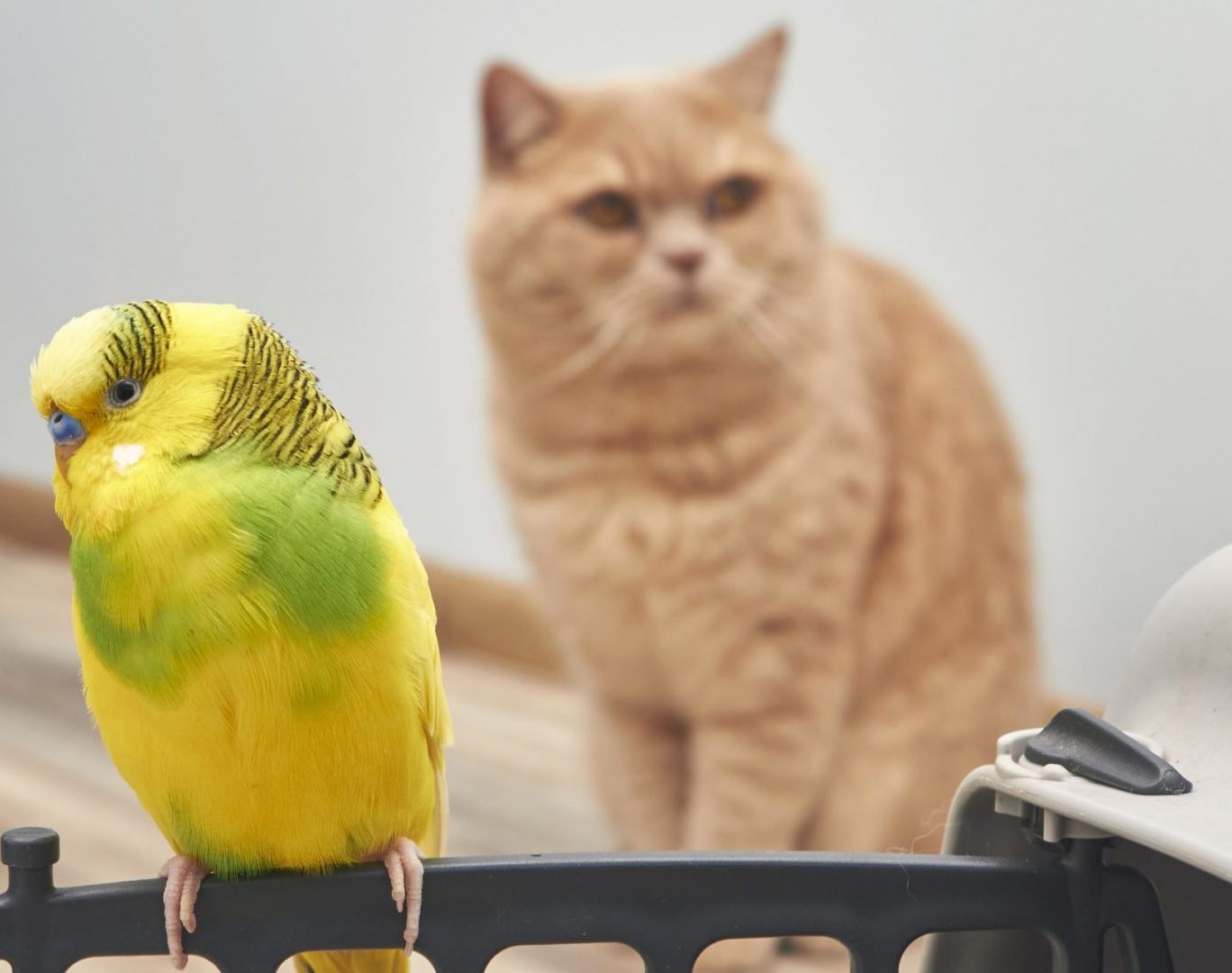Those deep hazel eyes. The ability to blend into any environment seamlessly. And the long, fast tongue, ready to catch its prey. Yes, we’re talking about the chameleon that caught your attention on FetchaDate, but it was the owner behind this exotic pet that sealed the deal on going on a date.
You feel like you’ve hit the jackpot with your date. You’re a great match and enjoy many of the same activities. But will your dog enjoy this exotic pet as much as you enjoy its owner?

Exotic pets vs cats and dogs
Exotic pets can be thought of as anything from a rabbit and bird to a ferret or lizard—basically, any pet other than a cat or dog. Of course, they range in behavior and personalities from a cuddly rodent to a watchful amphibian.
Housing for exotic pets can differ vastly from the needs of a cat or dog. Amphibians and reptiles may be kept in a cage with UV lights, special bedding, and enrichment items.

But some exotic pets may not be so different than a cat or dog. Pet rabbits are known to roam free in the house and use the litter box, just like a cat. Rabbits are even known to be trained to walk on a harness and leash!
Should you introduce your cat or dog to an exotic pet?
Dr. Kristen Claricoates, Doctor of Veterinary Medicine at Chicago Exotics Animal Hospital, told PetMD that owners should complete an honest assessment of their pet before considering introducing them to an exotic pet. If your dog lunges at squirrels, birds, or rabbits on walks, a meet-and-greet could be dangerous for your exotic pet. If your pet isn’t as suitable of a match for the exotic pet as you are with its human, you’ll want to have a serious conversation about how to separate them for their safety.
If your relationship is new, consider dating for a few months before introducing your pets. A meet can be stressful for both pets, and there’s no reason to stress your furry BFF if you and your date only go out a few times.
The best and worst exotic pet companions for cats and dogs
No matter the animal, introductions are always best at a young age. According to Dr. Claricoates, rabbits may be the most social of exotic pets and have been found to show no fear toward cats when introduced at a young age.
The ferret is both prey and predator, meaning it may be unpredictable. This exotic pet can have natural instincts to hide or to attack.

Some dogs have a long lineage of being bred for hunting with a heightened instinct to attack a small exotic pet. Although all interactions should be supervised, extra precautions should be taken with dog breeds such as Retrievers, Setters, Spaniels, and Pointers. This is also true for cat breeds like the Savanah or Bengal cat.
Take a trip to the pet store
A great way to introduce your pet to the world of exotic pets is to take a trip to your local pet store. Give your dog time to look at the exotic pets. Let your pup smell the glass, then direct their attention back to you with a command, treat, or toy. Repeat this training so that you can maintain control when it’s time for the real meet-and-greets. Not only will this be a useful experience for your dog, but it also makes for a fun date. This is the perfect time for you or your date to teach one another about unfamiliar pets.
Get personal
Before meeting your date’s exotic pet snout-to-beak, first have your pet smell something belonging to the exotic pet. This will be the introduction of the exotic pet to your pet. Then, introduce the pets with a barrier between them such as sniffing through a closed door, gate, or cage. Repeat this a few times before introducing the pets in the flesh. Continue to train your dog with commands as they are sniffing and engaging with the separated pet. Reinforce positive behavior with treats and praise.
When ready to meet face-to-face, keep the interactions short and always supervised with both owners present. Watch for signs of stress that may signify to cut the interaction short. A shortened visit doesn’t mean this new relationship won’t work, but rather to try another time while still keeping visits short and positive.
Smell is important for cats and dogs to understand their surroundings. But first, make sure both pets are comfortable with the close interaction. It’s not always best to let your pet lick the exotic pet, especially reptiles who are carriers of salmonella.
A blended family
While some pets may surprise you and get along great, we have to accept that some are just not going to get along and not force them to do so. Be prepared that this might happen, and be ready for an open conversation about how to keep both pets safe and happy in the relationship.
But they may find a BFF like Cricket the Golden Retriever and Larry the Tortoise, who’ve become an Instagram sensation @fozzcook. Their owner Christine Hill told National Geographic, “When the two first met, it was almost like they were chatting. … Cricket laid down next to Larry, and the tortoise was completely at ease. Since that day, they’ve been inseparable.”
The pets may need long-term, short, supervised visits. Juniper the Fox loves her dog friend Moose, but her owner Jessica states, “Even though Juniper and Moose have an amazing relationship, they are still never left unsupervised together because of the drastic differences in their behavior.”
Whatever your blended family looks like, with patience and open communication between yourself and your partner, you can all still have a happy relationship. Get swiping right on those with exotic pets on FetchaDate as it is the place where pet lovers meet!









